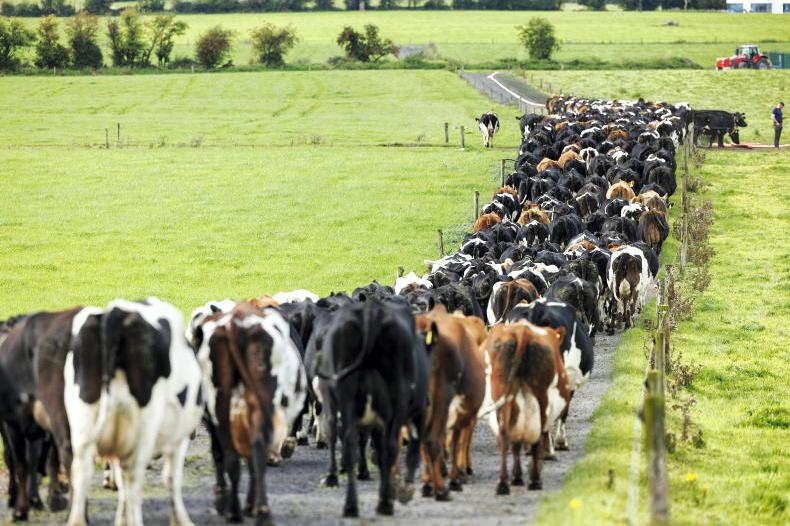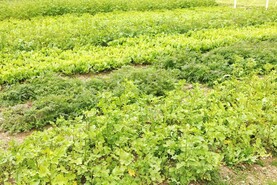Last weeks’ announcement by the Minister for Agriculture that an appropriate assessment process would have to be completed in order for a new nitrates derogation to be approved, has been met with disbelief among farmers and the wider industry.
Farmers and the wider dairy sector effectively entered into a bond with the Irish and European authorities that if water quality improved, then Ireland would keep the derogation. That is what the Irish government said and that is what then European Commissioner Sinkevicius said when visiting Ireland in 2023. That outcome was also implied after the visit by Commission officials to Ireland in September 2024.
On 2 July the EPA published a report stating that nitrate levels in rivers dropped by 10% nationally and in the south east in 2024. Furthermore, nitrates have dropped by 20% in the south east since 2019. Nitrate levels in rivers are now at their lowest since 2016 and statistically, no relationship exists between dairy cow numbers and nitrate levels in rivers.
Rather than congratulating farmers on this improvement, days after the EPA report was published Minister Heydon announces a radical shift in policy, informing farmers that the European Commission now want an appropriate assessment of the impact of the derogation on habitats.
Questions need to be asked about the timing of this request, coming as it does just with just five months to go before the current derogation lapses.
Nobody knows how long it will take to carry out an appropriate assessment across 583 sub-catchments covering the entire country but educated guesses suggest four to six years. In the meantime, the minister is going to request an extension of the existing derogation while the process is completed.
Two immediate questions emerge: Firstly, will the Commission grant an extension for four to six years while the assessments take place and secondly, what is the likely outcome of the appropriate assessment?
Dealing
Answers to both are hard to get. Dealing with the second question first, the appropriate assessment will be looking at the impact of derogation farms on natural habitats, protected under Natura 2000 rules such as SAC’s and SPA’s. Almost all rivers and streams in Ireland end up flowing into Natura 2000 sites so almost all of the sub-catchments will be required to undertake assessments.
The appropriate assessments will be looking at the impact a derogation farm, that is a farm with a stocking rate higher than 170kgN/ha that has a derogation will have on the natural habitat in question.
Different habitats are protected for different reasons depending on the flora and fauna that exist there. Some are protected because of the wild birds that live there, others are protected because of fish life such as pearl mussel, Atlantic salmon, etc. Other sites are protected because of the flora that grows there such as plants, mosses, etc.
I am not an ecologist, but the question in my head is what wild plant or animal, if given the choice, would take the risk of higher nitrate levels in their habitats? That may be too simplistic, but that is what those doing the appropriate assessment will be tasked with answering.
The Department of Agriculture’s own methodology around the appropriate assessment is very clear; derogation farms are the source, streams and rivers are the pathway and Natura 2000 sites are the receptors.
The key word here is source. Derogation farms are requesting an additional nitrogen load and the assessors will have to judge what impact that load is going to have on the habitat. How many of the 463 sub-catchments with derogation farms will still be eligible for a derogation after this process eventually concludes? Will they even have a derogation at all by the time the process ends?
Uncertainty
There are so many questions and so much uncertainty for farmers now, and not just derogation dairy farmers. The sense I get from talking to farmers is that they feel betrayed by the process and no longer know who to trust.
Let’s be clear, the 10% improvement in nitrate levels in 2024 would not have been achieved were it not for the measures taken at farm level, by all farmers. Now farmers are told that they were aiming for the wrong thing.
Publication of the Teagasc report on the economic importance of the derogation has been delayed by the Department of Agriculture while it seeks amendments. We know the report states that losing the derogation will cost dairy farmers €300m every year.
Last years’ KPMG report found that multiple milk processing plants and beef factories will close as a result of losing the derogation.
The alternative view is that losing the derogation and a couple of hundred thousand dairy cows that go with it, will go a long way to meeting Ireland’s greenhouse gas emissions targets.
That may be cynical, but its hard not to be cynical in these dark times for Irish agriculture.
Are our elected representatives, both in the Oireachtas, Europe and in farm organisations content with being the ones who presided over the start of the end of productive farming in Ireland or are they going to stand up and be counted?






 This is a subscriber-only article
This is a subscriber-only article










SHARING OPTIONS: